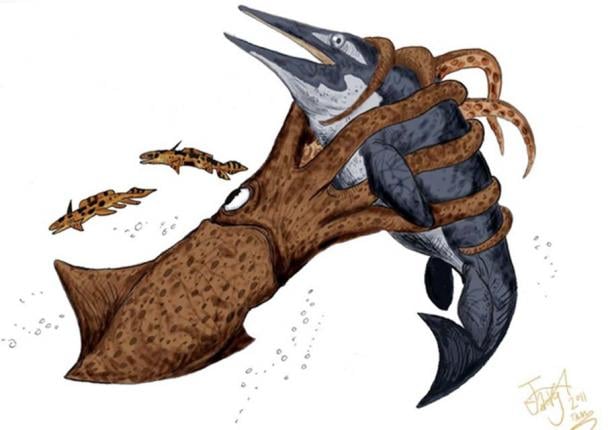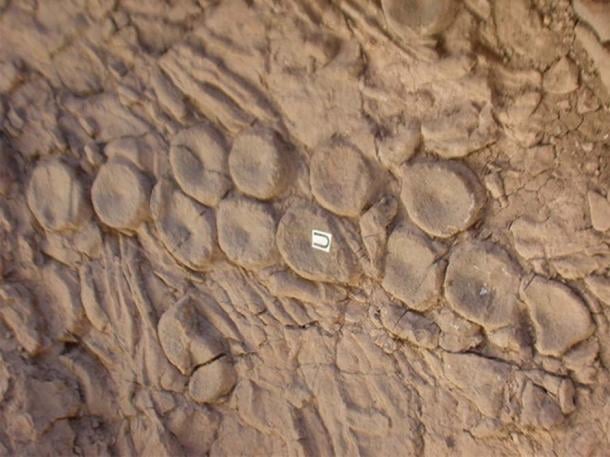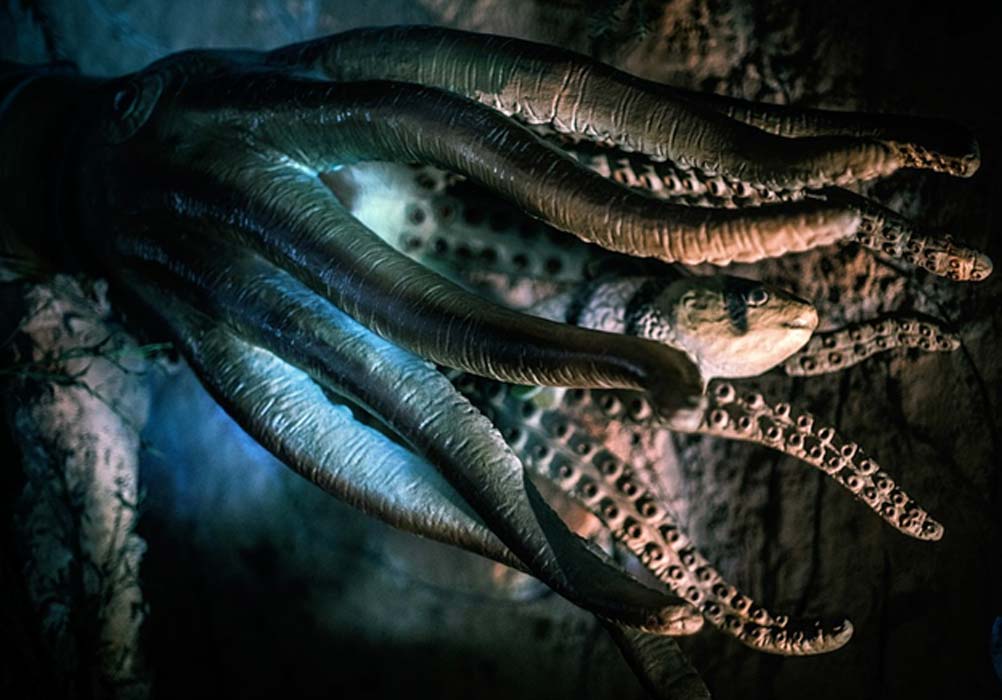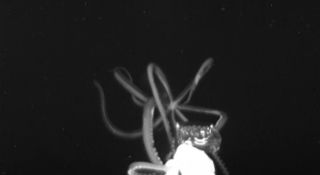List members , here is an excellent article about the legendary sea creature , the Kraken of Norse mythology that lives in the ABYSS !
Are Fossils Linked to the Legendary Kraken Enough to Prove its Terrifying Existence?
Scandinavian mythology claims the Kraken swallowed up whales and devoured ships. It has been described as a huge version of an octopus or squid. Legends have even claimed the terrifying sea creature measured one-mile long. Although the Kraken was first noted in the 13th century Icelandic saga, Örvar-Oddr, a researcher believes he has fossil evidence that is linked to this creature.
Digging Into The Hidden Chambers of Oldest Christian Church In The World
Initially found in 2011, fossils of a marine lizard showed a strange pattern which a researcher believes was caused by a Kraken-like octopus. The claim has been criticized, but Professor McMenamin, a paleontologist at Mount Holyoke College in Massachusetts, backed up this conclusion with other findings.

Pen and wash drawing by malacologist Pierre Dénys de Montfort, 1801, from the descriptions of French sailors reportedly attacked by such a creature off the coast of Angola. ( Public Domain ) Was it a Kraken?
An odd arrangement of sea reptile vertebrae was found in Berlin-Ichthyosaur State Park in Nevada. The animal was called an ichthyosaur and it lived around 200 to 250 million years ago. The manner in which the bones were found suggests that it was attacked by a much larger predator - perhaps supporting the hypothesis that a giant octopus or squid once dominated the seas. It has been estimated the creature which vanquished the ichthyosaur had to have been about 30 meters (98.43 ft.) long; this far surpasses the largest giant octopus known today – a creature rarely larger than a human being.

Artist’s depiction of a Kraken attacking an ichthyosaur. ( Hodari Nundu )
The discovery of a fossil identified as part of the beak of a giant octopus or squid-like creature, along with more bones arranged in unusual patterns which have sucker markings, adds to Professor McMenamin’s evidence. A 'debris pile' of scattered bones were also found alongside the remains of the ichthyosaur.

Professor McMenamin claims these ichthyosaur vertebrae were taken out by a sea monster and arranged in this pattern. ( Mark McMenamin )
Professor McMenamin asserts that the bones’ arrangement and the location of the sucker markings indicate the ichthyosaur was drowned or had its neck snapped. From there, it seems the beast was moved, possibly to the Kraken’s lair, where it was dumped.
Could this discovery really point to the existence of the legendary Kraken? While the idea is interesting, further evidence is necessary.

Imaginary view of a gigantic octopus seizing a ship. ( Public Domain )
Top Image: An octopus and fish. Scandinavian mythology claimed the Kraken was a sea monster that looked like an octopus or a squid – but was much bigger. Source: CC0
Regards


